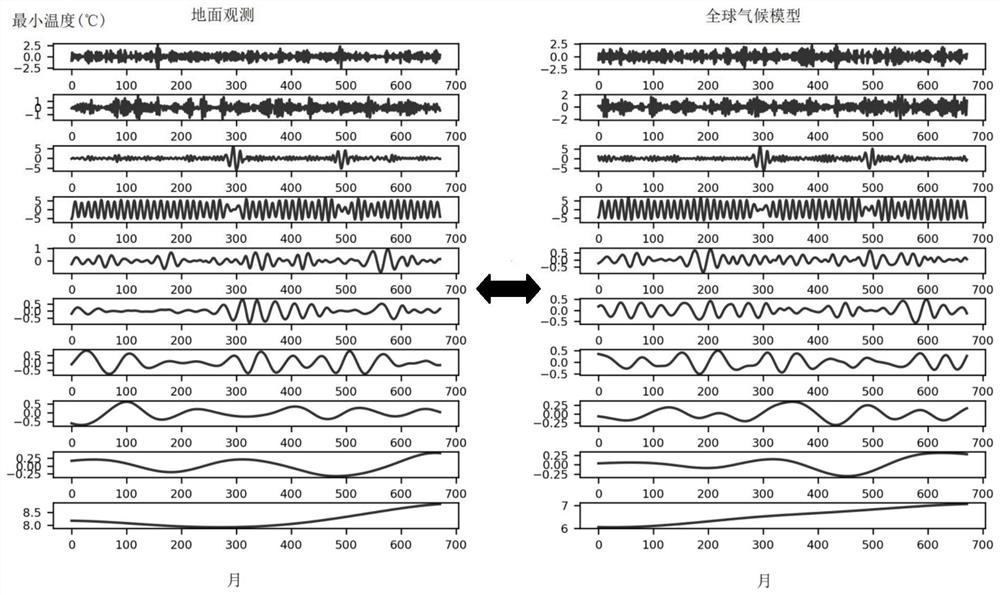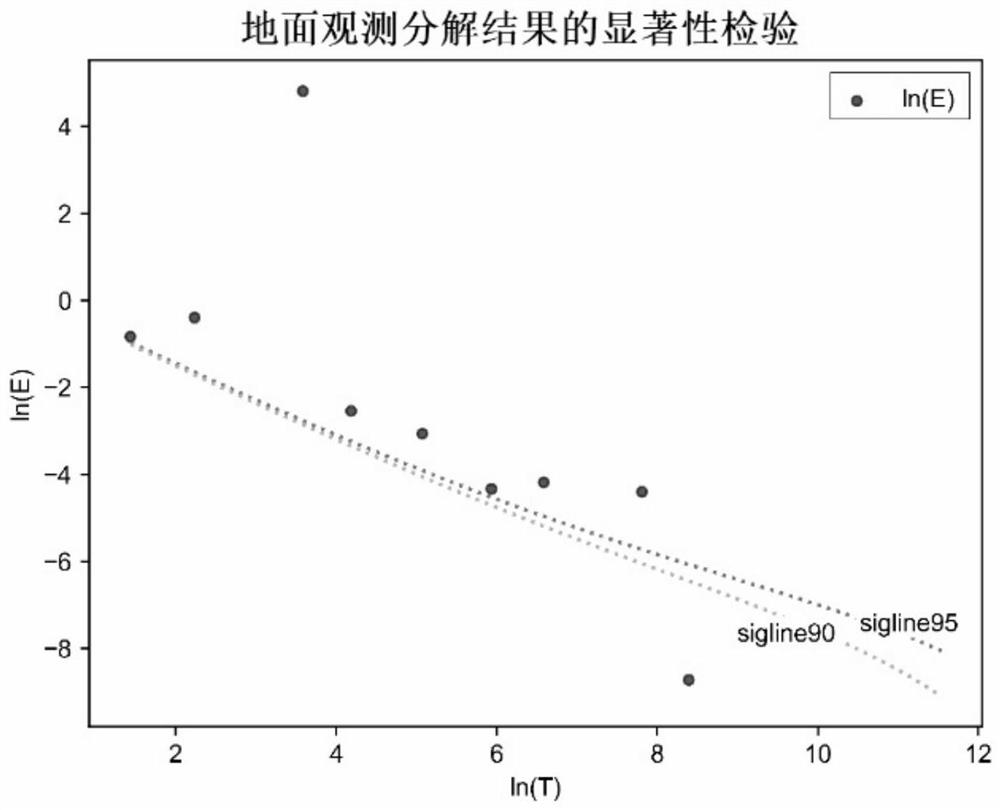A Statistical Downscaling Method Based on Non-stationary Time Series Decomposition
A time series and downscaling technology, applied in the direction of climate sustainability, complex mathematical operations, ICT adaptation, etc., to achieve the effect of reducing input uncertainty and strong generalization ability
- Summary
- Abstract
- Description
- Claims
- Application Information
AI Technical Summary
Problems solved by technology
Method used
Image
Examples
Embodiment 1
[0099] This embodiment takes the downscaling of monthly average maximum temperature, minimum temperature, and precipitation at the plain site 1 and the mountain site 2 as examples to illustrate a statistical downscaling method based on non-stationary time series decomposition. Site 1 is a plain site with an average altitude of 18.1m and is a fixed meteorological observation station near a farm in a city; Site 2 is a mountain site with an average altitude of 1890.9m and is a fixed meteorological observation station for a lake. Site 1 has a typical Mediterranean climate with mild and humid winters and hot and dry summers; due to the higher altitude of Site 2, the area has a Mediterranean continental climate with warm and dry summers. The technical roadmap of the downscaling method is as follows figure 1 As shown, the specific steps include:
[0100] S1. Downscale data preparation:
[0101] Collect the large-scale data of the CMIP5 global climate model GCM and the small-scale m...
PUM
 Login to View More
Login to View More Abstract
Description
Claims
Application Information
 Login to View More
Login to View More - R&D
- Intellectual Property
- Life Sciences
- Materials
- Tech Scout
- Unparalleled Data Quality
- Higher Quality Content
- 60% Fewer Hallucinations
Browse by: Latest US Patents, China's latest patents, Technical Efficacy Thesaurus, Application Domain, Technology Topic, Popular Technical Reports.
© 2025 PatSnap. All rights reserved.Legal|Privacy policy|Modern Slavery Act Transparency Statement|Sitemap|About US| Contact US: help@patsnap.com



